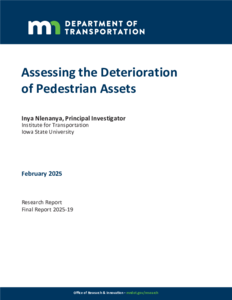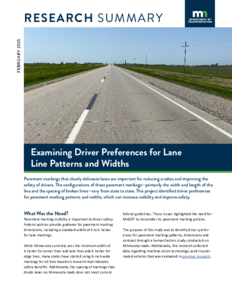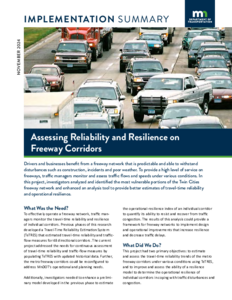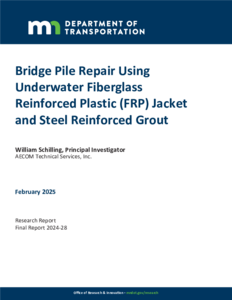Assessing the Deterioration of Pedestrian Assets
Creator
Date Created
2025-02
Report Number
2025-19
Description
Assessment of Travel-Time Reliability and Operational Resilience of Metro Freeway Corridors
Creator
Date Created
2024-12
Report Number
2024-27
Description
An Innovative Practical Approach to Assessing Bitumen Compatibility as A Means of Material Specification
Date Created
2025-01
Report Number
NRRA202501
Description
Bridge Pile Repair Using Underwater Fiberglass Reinforced Plastic (FRP) Jacket and Steel Reinforced Grout
Date Created
2025-02
Report Number
2024-28
Description
Project Summary: Community Driven CAV
Date Created
2025-02
Report Number
2025-20
Description










